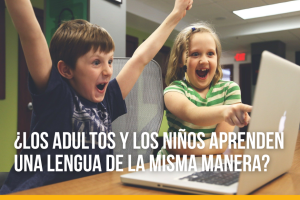Spanish Christmas traditions are the perfect excuse to get closer to Hispanic culture and of course, speaking Spanish will help you to enjoy an authentic and traditional Christmasin Spanishspeaking countries.
Of all the traditions and celebrations throughout the year, Christmas is probably the most important one in Latin America. While religion and beliefs play a great part in its importance, family, friends, and the feeling of love and union make this one of the most anticipated holidays for Hispanics.
I do not want to talk about the specific countries celebration but about things that make Spanish Christmas special. Things that determine the similarities in all Spanish-speaking countries.
SEASONAL MUSIC
Los villancicos (Christmas carols) are a must during the holidays.
You can find more regionalist rhythms, like gaitas in Venezuela. However, villancicos are spread all over Latino America.
Check out these popular Hispanic Christmas songs.
- Mi burrito sabanero – My Sabanero Donkey
- Campana sobre campana – Bell over Bell
- Los peces en el río – The fish in the river
- Feliz Navidad – Merry Christmas
- Ven a mi casa esta navidad – Come home this Christmas
Some popular songs are Spanish versions of favorite from around the world, like Noche de Paz (Silent Night), Blanca Navidad (White Christmas) or Cascabel (Jingle Bells). All have Spanishlanguage translations.
DECORATIONS
Decoration is a big part of Christmas traditions in Spanish-speaking world. Many people put up decorations for the whole month of December (or until Epiphany).
As the world gets more connected over time, Christmas trees are more common than ever in Latin America and Spain. However, the most significant decoration are Nativities. These large, elaborate Christ’s nativity scenes, known as Nacimiento, Pesebre o Belen, are essential in any home for a traditional celebration that families put together in their homes.
The scene pictures the moment Jesus was born, and includes baby Jesus, Mary, Joseph, an angel, and barn animals. Some also include a shepherd, and others have the three wise men. Baby Jesus is not traditionally added to the Nacimientos until Christmas Eve, the night Jesus was born. In some regions there is a tour to see some of Nacimientos in the area. Some are part of private collections and others are in churches. You also can find Nacimientos staffed by live actors. As you can see, Nacimientos are taken seriously.
Lights—including fireworks—in private and public spaces, are also a big part of Christmas around the Spanish-speaking world.
SPANISH-SPEAKING COUNTRIES CHRISTMAS FOOD
Food is a fundamental part of the holidays. Families come together to not only eat but also prepare and share their food.
I t is not a surprise that food is a big part of any Christmas celebration around the Spanishspeaking world. Even each country has a slightly different menu, there are a lot of similarities. Food is sinonimun of affection in many parts of the world, and Latin America is notthe exception. Here you have some (just some) example:
- Lenchón (roast pig) is a popular dish to serve at Christmas time in Spain, Puerto Rico, Cuba, and all-over Latin America.
- Buñelos (fried dough balls) are holiday favourites in many countries, though the style varies slightly from country to country. Most buñelos are seasoned with anise, though even that depends on the style. In Mexico, buñuelos are served with syrup and dusted with sugar, while in Columbia, they’re made of white cheese. In Uruguay, they’re made with fruit, usually bananas and apples.
- Roscón de Reyes (king cake) is a round cake studded with fruit. When assembled, it resembles a crown full of jewels. Roscón de Reyes is a big part of the Día de los Reyes, which you’ll discover more about soon.
- Turron, a type of nougat made of toasted sweet almonds and honey, is the real star at the dessert table. Turron did not originate in Spain though it is the country in the world with the highest consumption and it has been for so many centuries a part of the Spanish gastronomy that it can already be considered a local specialty with no hesitation.
- Marzipan is a traditional dessert of almond and sugar paste made into small little shapes.
- Polvorones are a type of crumbly shortbread made of flour, sugar, milk, and nuts.
- Hallacas are a traditional Christmas dish from Venezuela that looks like a tamal, though different in flavour, texture, ingredients, and cultural significance. It starts with a thin layer of corn dough stuffed with a meat filling made with beef, pork, and chicken and topped with several ingredients, such as onion rings, bell pepper, raisins, olives, etc. Then wrap in plantain leaves, tie, and boil. This dish is traditionally served during the Christmas season, and it can vary depending on the region and family traditions.
- Tamales are popular in Mexicans Christmas dinners. They date back to 8,000 B.C in prehistoric Mesoamerica. Tamales are corn-based dough filling with meat, which include chicken, pork, beef tomato, and much more. After preparing the tamal, it is folding in a husk and steamed before eating.
NOCHEBUENA
Christmas Eve celebration is the most important gathering of the entire year for Spanish families. Called Nochebuena, meaning ‘good night’ in Spanish, Christmas Eve consists of a large and lengthy evening meal with the family and with a Midnight Mass, known as either La Misa del Gallo or Misas de Aguinaldo, depending on where you are; it serves as a collective vigil for the birth of Christ. In the fifth century, Pope Sixths III created the custom of celebrating the midnight Mass at the nativity scene behind the altar of Rome’s Santa Maria Maggiore Basilica. Starting the vigil mass at the “crow of the rooster,” an ancient Roman expression for the start of a new day at midnight, apparently gave the special Mass its name.
Perhaps the most significant difference between Christmas celebrations in Spanish-speaking countries and those that speak English has to do with when gifts are given.
Santa Claus is known worldwide, but that doesn’t mean his name is the same everywhere.
In a lot of countries of Latin America, he is known as Papá Noél (father Noel). Meanwhile, in Chile, he is called el Viejito Pascuero. In Venezuela, his name is San Nicolás (Saint Nicholas), and in Central America he’s called Santa Clos or Santi Clo. In Costa Rica, he is known as Colacho.
But in some places, he’s not the one in charge of the gifts! In Colombia, is baby Jesus brings kids what they want for Christmas. And in Spain and Mexico, those in charge of the gifts are los Reyes Magos (Three wise men) who visit the kids on January 6.
¡FELIZ AÑO NUEVO!
Nochevieja, literally meaning ‘old night’, is the term used for New Year’s Eve. People throughout Latin America ring in the new year with food, fireworks, and fun. On New Year’s Eve, family dinners give way to fireworks in the streets or huge pyrotechnic displays in the main public squares of cities.
Revelers throughout Latin America keep alive a New Year’s tradition brought from Spain: eating 12 grapes, one at each chime of the countdown to midnight, to ensure good luck and prosperity. In some countries, wearing yellow underwear is believed to bring prosperity in the coming year, while red underwear will bring love.
We covered some of the most and common tradition in Latin America, no all of them. You always have room to discover. Remember, celebrations are an excellent way to dive more deeply into Spanish culture, and of course to practice your Spanish enjoying in a natural way. You will be better connected with your family, Friends, and colleagues when you know why and how they celebrate. Please, learn how to sing Mi burrito Sabanero and you will be the king of the party.
We wish you could spend this time of the year abroad and have a full contact and immersion in our culture and language.
¡FELIZ NAVIDAD Y AÑO NUEVO!


